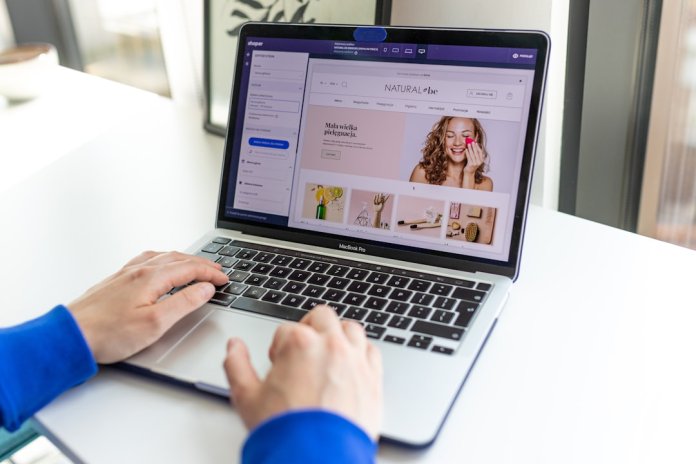When expanding into new international markets, businesses can’t rely solely on translating their content or updating shipping options. One often-overlooked aspect of internationalization is the need to adapt — or localize — the visual identity of a brand. Your logo, the visual cornerstone of your brand, must resonate with the cultural, linguistic, and aesthetic expectations of different audiences. Localizing a logo for regions like the United States, the United Kingdom, and Australia requires strategic thinking, deep cultural insight, and careful visual execution.
TL;DR:
Localizing a logo for new markets such as the US, UK, and AU goes beyond minor design tweaks. Cultural differences, spelling variations, and symbolism all play critical roles in how a logo is perceived. Brands need to assess whether adaptation is necessary and, if so, how far it should go without compromising core identity. This process ensures stronger brand recognition and deeper customer connection in each market.
Understanding the Importance of Logo Localization
Your logo is more than an image—it’s a promise. It reflects your company’s values, mission, and market positioning. But when entering markets like the US, UK, and AU, brands must understand that the perception of visual elements varies widely. What feels contemporary and sleek in London might come across as sterile or overly minimalistic in Sydney.
Failing to localize a logo may result in poor customer engagement or even offense. On the other hand, thoughtful localization can build trust, communicate cultural intelligence, and strengthen your brand’s credibility.
Key Factors Influencing Logo Localization
When adapting your logo for different English-speaking markets, several factors come into play:
- Spelling and Language Variances: While the US, UK, and AU share English, each has its own rules (e.g., “color” vs. “colour”). Logos containing text must accommodate these nuances.
- Color Perceptions: Different cultures associate colors with different meanings. A color perceived as trustworthy in one region might appear cold or aggressive in another.
- Typography and Font Style: Font preferences vary. The UK may lean toward classic serif typefaces, while the US often favors modern sans-serif designs.
- Symbolism and Cultural Sensitivity: Symbols carry unique connotations. An iconography felt as patriotic in the US may not translate meaningfully—or positively—to an Australian audience.
Logo Localization in the US Market
The US is a vast and diverse market, but several design themes remain broadly effective. Generally, branding in the US emphasizes innovation, approachability, and bold execution. Logos with clean lines, commanding colors, and straightforward fonts tend to perform well.
However, brands should pay attention to distinctly American motifs such as stars, stripes, or even abbreviations that resonate with local interpretations. Importantly, simplicity is often revered in US design, with logos favoring practicality over heavy symbolism.
Considerations:
- Ensure any text follows American English rules.
- Red, white, and blue can evoke patriotism, but use them carefully to avoid cliché.
- Think about regional diversity—what works in New York might not appeal in Texas.

Logo Localization in the UK Market
British markets appreciate heritage, quality, and understated elegance. Logos in the United Kingdom often strike a balance between contemporary flair and traditional sensibilities. Brands entering the UK should avoid aesthetic excesses and instead opt for subtlety and refinement.
Additionally, spelling is a critical differentiator. If your tagline or logo includes words like “customization” or “organize,” they should be respelled as “customisation” and “organise” to align with British norms.
Considerations:
- Use British English in all typographic branding elements.
- Embrace minimalist yet intricate design features.
- Color schemes should reflect trust and expertise. Think deep blues, muted earth tones, or monochrome palettes.
Logo Localization in the AU Market
Australia presents a unique merging of British heritage and American influence, with its own laid-back and pragmatic cultural lens. Successful logo design here often takes a balanced approach — visually clean, accessible, and culturally inclusive.
There is an increasing emphasis on sustainability and nature in Australian branding, as well as the inclusion of Indigenous culture. For some brands, aligning with these values in visual form can create significant inroads into customer loyalty.
Considerations:
- Spellings should match British norms (“centre” instead of “center”).
- Consider incorporating soft greens, blues, and browns to reflect environmental consciousness.
- Avoid overly corporate or aggressive styling – Australians respond well to authenticity and clarity.

How Far Should You Localize?
A localized logo must remain recognizable. The key is to balance consistency with customization. Your core brand DNA—the shape, idea, and concept behind the logo—should remain intact, while surface-level features can be adapted to local tastes.
International giants like Coca-Cola and McDonald’s succeed in blending this balance. They alter fonts, colors, or cultural relevance while maintaining a unifying brand story worldwide.
Ask yourself:
- Will adapting the design compromise brand recognition?
- Is localization necessary based on my customer demographic?
- Are local designers or consultants part of the creative process?
Technical and Legal Considerations
Logo localization also entails technical adjustments, not just creative ones. These may include:
- File Formats and Resolution: Adapt sizes for local media requirements, from billboards to mobile screens.
- Trademarks: Register your localized logo variations with appropriate IP offices in the US, UK, and AU to avoid legal complications.
- Accessibility: Pay attention to color contrast and font legibility to meet digital accessibility standards in various regions.
Best Practices for Localizing a Logo
To properly localize your logo, follow these essential best practices:
- Conduct Market Research: Understand what your local audience wants and needs from a visual branding standpoint.
- Hire Local Designers: They bring cultural insights that can guard your brand against tone-deaf executions.
- Test Extensively: Run A/B testing across your new markets to measure the impact of localized versions compared to the original logo.
- Document Design Guidelines: Create region-specific brand guides to control quality and consistency across print, web, and retail assets.
Conclusion
Localizing your logo is a strategic investment—not just a creative exercise. It’s a clear signal to new markets that your brand speaks their language, respects their culture, and responds to their preferences. Whether you’re tweaking colors or reworking a typeface, these decisions carry lasting impressions.
In a competitive global market, localization often becomes the line between marginal engagement and deep brand loyalty. For US, UK, and AU markets—each with its own intricacies and idiosyncrasies—this process is not optional; it’s essential.
